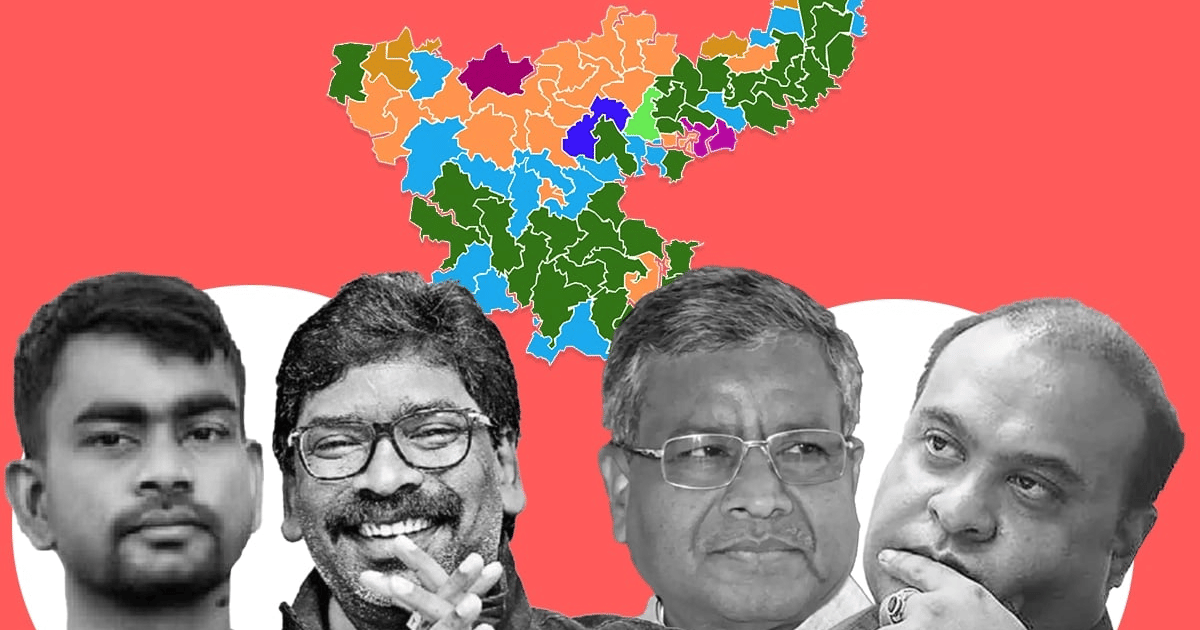 |
|
The Bharatiya Janata Party (BJP)'s resounding victory in Maharashtra's 2024 assembly elections stands in stark contrast to its significant setback in Jharkhand. Securing only 21 out of 68 contested seats, a decline from 25 out of 79 in 2019, reveals a critical need for introspection and strategic readjustment. While the party experienced a slight increase in vote share per seat, this superficial gain masks a deeper malaise that requires comprehensive analysis to address. The party's missteps were multifaceted, encompassing both strategic blunders and operational failures, all contributing to this unprecedented defeat.
One seemingly promising strategy, focusing on the issue of illegal Bangladeshi immigrants, ultimately proved counterproductive. While pre-election campaigns effectively highlighted the issue, the BJP made a crucial mistake by applying this narrative to regions of Jharkhand where it lacked resonance with local populations. The party's ground mobilization efforts were insufficient in areas like Santhal Pargana, where the problem is most acute, failing to persuade tribal voters. This shortcoming points to a broader failure to grasp the intricate socio-political dynamics at play. In Jharkhand and neighboring Bihar, the Hindu-Muslim divide is less salient than caste-based divisions. The BJP's approach, inadvertently framing the Bangladeshi issue through a religious lens, failed to connect with tribal voters who perceive the situation through a complex interplay of caste and cultural affiliations. The integration of Bangladeshi immigrants into tribal communities, often facilitated by intermarriage, created a subtle alliance that the BJP's messaging failed to effectively counter. This alignment, further strengthened by the presence of both tribal and Muslim voices within the Indian National Inclusive Developmental (INDI) Alliance, presented a formidable challenge to the BJP's narrative.
Further exacerbating the BJP's problems was its handling of the burgeoning Jharkhandi identity. Over two decades after the state's formation, regional identity is becoming a critical electoral factor. The significant influx of migrants from Bihar, Bengal, and Uttar Pradesh, now comprising an estimated 35% of the state's population, created a volatile socio-political context. While Jairam Mahato successfully capitalized on this sentiment, the JMM also effectively highlighted the BJP's image as an outsider party. The deployment of key strategists Shivraj Singh Chouhan and Himanta Biswa Sarma, both from outside Jharkhand, unintentionally reinforced this perception. The notable absence of Babulal Marandi, the NDA's chief ministerial candidate, from BJP rallies further fueled this narrative, allowing the JMM to accuse the BJP of disrespecting its own established leadership within the state. This points towards a critical oversight—the need to empower and prioritize local leadership in shaping the party's strategy and outreach.
The BJP's reliance on aging and less-effective leaders also contributed significantly to the defeat. Despite the prominent roles played by veteran leaders such as Babulal Marandi, Champai Soren, and Arjun Munda, their influence appears to be waning. The electoral losses suffered by these leaders and their close associates, including Meera Munda and Geeta Koda, highlight a need for generational change within the party. The BJP can no longer rely on leaders who have lost public trust or whose effectiveness has diminished over time. This necessitates a strategic shift, fostering a transition to new leadership while strategically positioning the older generation in mentorship roles to guide and support the emerging cadre. This would involve creating opportunities for younger leaders to gain experience and build their credibility, preparing them for future electoral contests.
The BJP's alliance strategy also came under scrutiny. The party's decision to prioritize the All Jharkhand Students Union Party (AJSUP), led by Sudesh Mahto, proved to be a miscalculation. AJSUP's underwhelming performance, reflected in its minimal seat gains, underscores the need for a more effective alliance strategy. Mahto's declining political influence and perceived lack of engagement highlighted the shortcomings of this alliance. The BJP should consider bolstering its alliance with parties that possess a stronger base and demonstrable electoral success. The relatively better performance of the JD(U), particularly in Kurmi-dominated areas, and the LJPRV's success in securing a Scheduled Caste seat, highlight the strategic potential of forging stronger collaborations with these parties. These alliances could strengthen the NDA's appeal to specific caste groups and improve their overall electoral performance.
In conclusion, the BJP's defeat in Jharkhand was not a single event but a culmination of several interconnected factors. The party's strategic blunders, operational inefficiencies, underestimation of local sentiments, and flawed alliance choices, coupled with its reliance on aging leadership, contributed to this significant setback. To reclaim its position in Jharkhand, the BJP must prioritize local leadership, revitalize its ground mobilization efforts, adapt its messaging to resonate with the unique socio-political context of the state, and forge stronger, more effective alliances. This necessitates a comprehensive re-evaluation of its strategy and a commitment to addressing the shortcomings that led to this unprecedented defeat. The road to recovery will require significant changes in approach, a keen understanding of the local landscape, and a willingness to embrace generational change within the party's leadership structure.
Source: BJP In Jharkhand: The Missteps That Cost It, Plus How The Party Can Make Amends Going Forward
